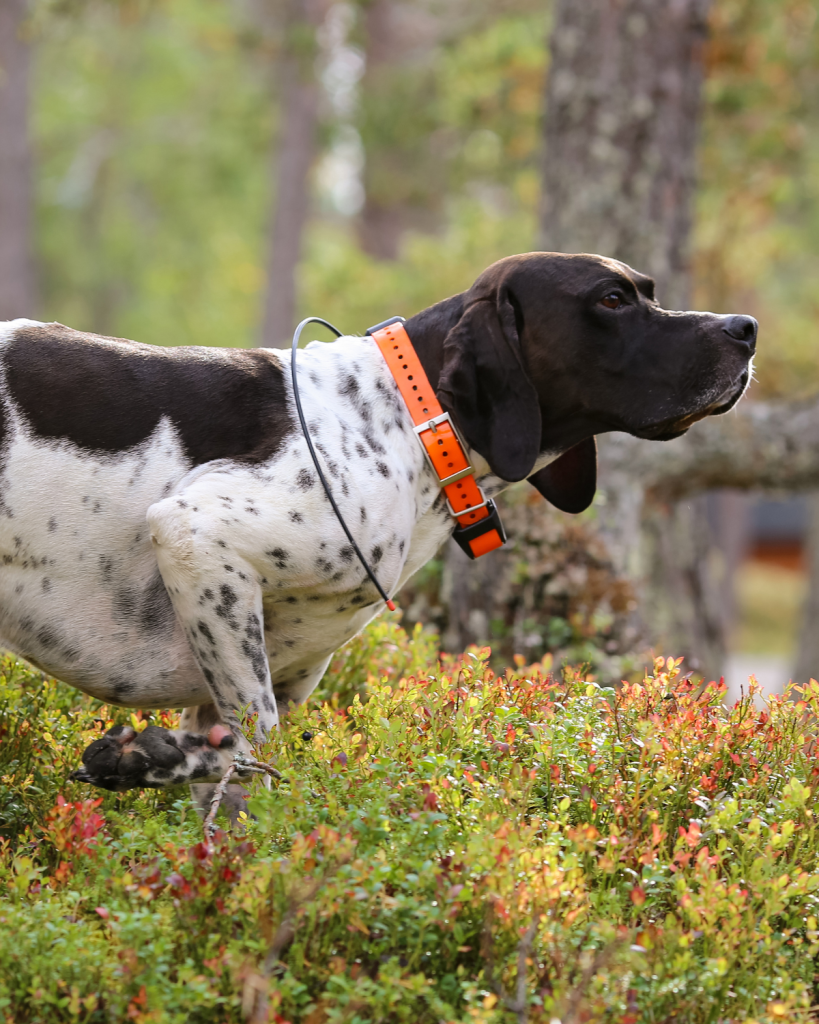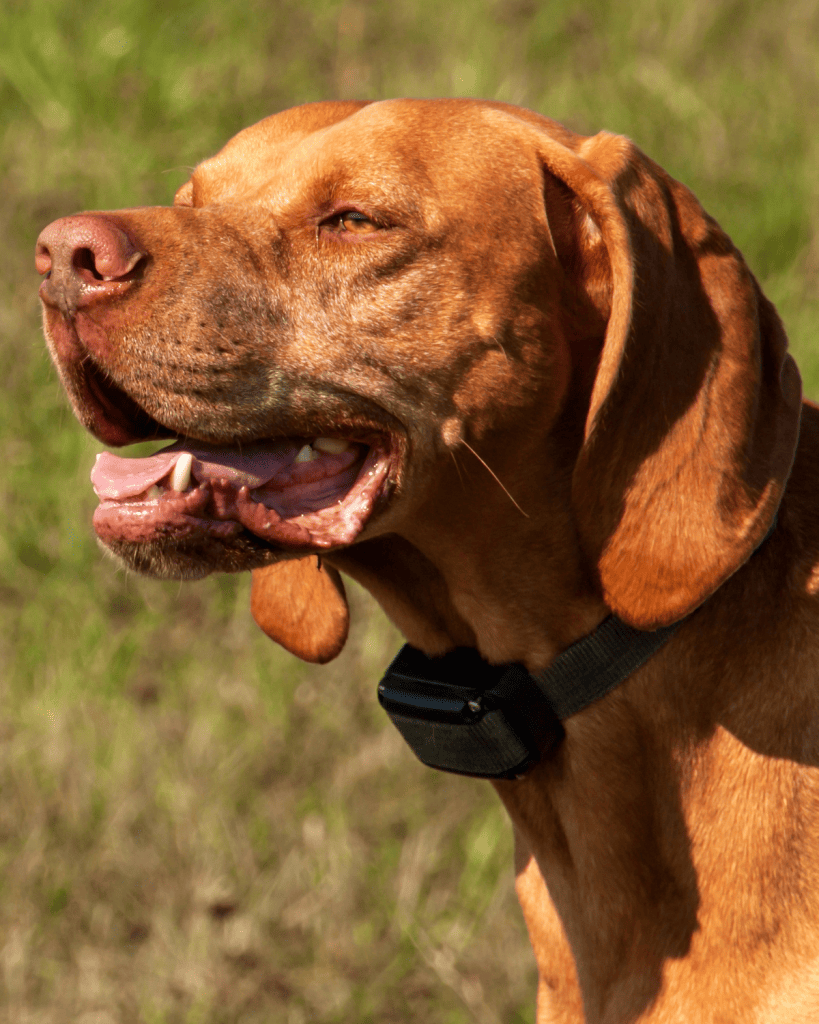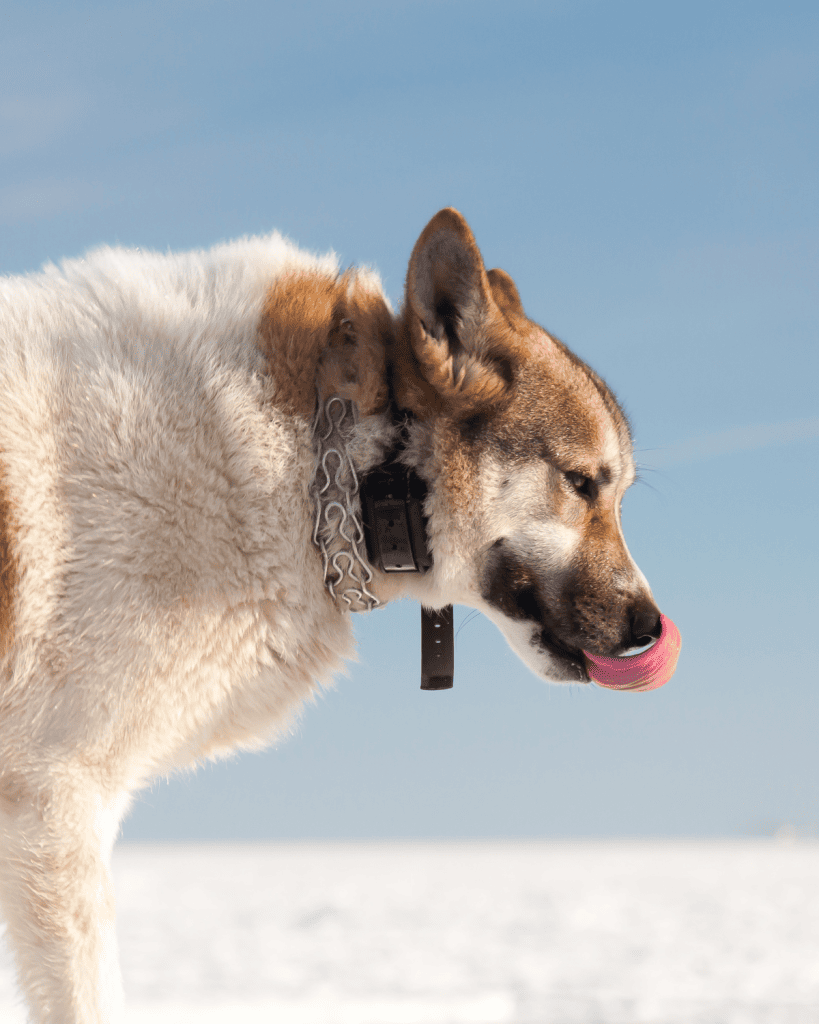In the world of pet ownership, particularly with dogs, there exists a group of canines lovingly referred to as “reactive dogs.” These four-legged friends might be overly energetic, sensitivity-triggered, or just a little more emotional than your average pup. Regardless of their varying quirks and idiosyncrasies, all pet parents want the best for their furry companions. So, when behavioral issues arise, it’s tempting to turn to quick-fix solutions like Electronic Collars (E-collars or shock collars) to address the problem.
But is this approach genuinely effective, or could it be causing more harm than good? This blog post delves into the heart of this critical topic, as we unravel why using E-collars on reactive dogs could potentially add to their distress rather than alleviate it. We’ll present a comprehensive exploration on the subject, providing you with fact-based information and expert perspectives. Whether you’re a devoted dog owner or a professional trainer, get ready to gain a deeper understanding of reactive canine behavior, E-collars, and alternative disciplinary methods.

Understanding Reactive Dogs
Reactive dogs are often misunderstood. They encompass a broad spectrum of behaviors that are (simply) a socially unacceptable reaction to a socially acceptable event. These responses are often to stimuli (also called a “Trigger”) in their environment, be it other animals, people or certain situations. These responses can be dramatic, loud or otherwise exaggerated, often masking these pets’ real feelings of fear, discomfort or anxiety.
Worse, these emotions are either deemed ‘aggressive’ in a large dog, or laughed at in small dogs (and honestly, I’m not sure which is worse).
Definition of a Reactive Dog
In the simplest sense, a ‘reactive dog’ is one that overreacts to external stimuli. This ‘reaction’ often takes the form of excessive barking, growling, or lunging – behaviors that can sometimes be misinterpreted as aggression. However, reactivity is usually driven by underlying issues such as fear, anxiety, or overstimulation. It’s essential to recognize that reactivity isn’t a personality trait, but a response pattern that can be modified with consistent training and patience.

Common Signs and Behaviors
Reactive dogs are often keenly alert and responsive, reacting quickly and sometimes disproportionately to stimuli in their environment. Here are few common signs and behaviors to look out for:
- Barking at the sight of other dogs or people: Consistently barking at other dogs or people, especially from a distance, could be one of the signs of reactivity.
- Pulling or lunging on the leash: Excessive pulling or lunging can also be a behavior shown by reactive dogs when they feel threatened.
- Aggressive posturing: Reactive dogs may display an aggressive posture, such as a stiffened body, raised hackles, or bared teeth when confronted with certain stimuli.
- Hyperactivity, Hypervigilance or anxiety: Reactive dogs may seem to have endless energy or exhibit signs of anxiety like whining, pacing, or attention-seeking behaviors when they are unable to engage with the trigger.
Understanding your reactive dog is the first step towards creating a safe and comforting environment, and finding appropriate training strategies that can effectively redirect any problematic behavior.

What are E-collars (Shock Collars)?
To better understand the impact of E-collars on reactive dogs, let’s first explain what an ecollar is and their intended use. E-collars, or Electronic Collars, often referred to as shock collars, are essentially training devices strapped around a dog’s neck.
How Do E-collars Work?
An E-collar is an electronic collar used in dog training, sometimes also called training collars or a remote training collar. It contains two main components: a handheld remote and a collar receiver – makes sense, right? The person holding the remote can deliver a signal – often static stimulation, vibration, or tone – to the collar. The dog wearing the collar feels a sensation that is intended to get their attention, disrupt the behavior or correct their behavior (depending on how you’re planning on training)
These devices have different levels of intensity that can be adjusted to suit the dog’s sensitivity and response. The sensation produced ranges from a mild tickling or annoying buzz to a sharp shock, which is why they are often labeled as “shock collars”, with two “prongs” or anodes that make direct contact with your dog’s neck skin and deliver a pulse of electricity, or focus a vibration to apply a punishment to our dogs (punishment here as defined by Skinner’s 1963 operant conditioning definitions).
However, when it comes to learning theory, namely operant conditioning, ecollars focus on the quadrants of “Positive Punishment” and “Negative Reinforcement”. This means they rely on applying an unpleasant sensation to punish undesirable behavior and “reward” appropriate behavior by a dog not experiencing the unpleasant sensation.

The Supposed Purpose And Use Of These Collars
E-collars were initially designed to train working dogs, particularly hunting dogs, that were often out of voice range. They allowed handlers to signal the dogs over long distances effectively.
Today, shock or E-collars are marketed as a ‘miracle’ solution for correcting disobedient or “problematic” behavior in dogs. The idea is to administer an uncomfortable shock as a form of punishment when your dog exhibits unwanted behavior. The theory is that the dog learns to associate the undesirable actions with an unpleasant sensation, causing them to modify their behavior to avoid the consequence.
However, the use of these E-collars has become more controversial over time – understandably. Numerous animal behavior researchers argue that there are less harmful and more effective ways to train dogs from SPCA to most veterinary societies, and almost all codes of ethics for professional trainers.
In the next section, we’ll discuss the potential risks and issues associated with using E-collars on reactive dogs.
Risks and Issues of Using E-collars
While E-collars are marketed as efficient training devices for getting your dog’s attention, they are not without their potential risks and drawbacks. Many animal behaviorists and welfare organizations have raised substantial concerns about their use, especially on reactive dogs.

Description of Potential Problems and Risks Associated with Shock Collars
Here are some of the potential issues that can be associated with the use of E-collars:
- Physical harm: Persistent application of electrical shocks can potentially lead to physical injuries such as burns on the dog’s skin, especially in cases of improper use or malfunction.
- Emotional stress & anxiety: The use of aversive training methods such as E-collars can result in stress, fear, or anxiety in dogs. This can exacerbate reactivity in reactive dogs, making them more apprehensive, scared, and unpredictable.
- Negative association: Dogs may not always associate the shock with their behavior. They could instead link it with other elements like people, other dogs, or surroundings, leading to fear, avoidance, or aggression towards those elements.
- Incorrect usage: Incorrect timing of the shock or inconsistent use may confuse the dog, making them unsure about what behavior they are being punished for, leading to increased stress and confusion.
Now the big thing when you go to a trainer program that does employ these sort of techniques, they’ll tell you this is only a consequence when used improperly – but by the same degree? These tools are almost never a good idea. Guardians and owners of reactive dogs are rarely are going to use even a great tool correctly the first time! So, when the e-collar training has such significant fallout, how do you go from unpracticed to pro quick enough to avoid negative effects?
Also, one of my favourite quotes is;
“to use punishment effectively, you need a thorough understanding of canine behaviour, a thorough understanding of learning theory and impeccable timing… and if you have those things, you don’t need to use punishment”
And he’s absolutely right. And, the road to not using punishment in training is less risky, and results in a more optimistic dog! So, consequently, why would we impinge on our dog’s life?

Expert Quotes and Cases
Many researchers and professionals in the field of dog behavior and animal welfare have voiced their concerns about the use of e-collars:
- “There is no published evidence of health benefits from the use of e-collars compared to other training methods, and—on balance—there are risks of harm and so we would advise against their use.” – Dr. Rachel Casey, Director of Canine Behaviour and Research, Dogs Trust.
- “Our research adds to the increasing body of evidence showing that the use of e-collars in training pet dogs can lead to a negative impact on welfare, at least in a proportion of animals trained using this technique.” – Professor Jonathan Cooper, Animal Welfare and Anthrozoology, The University of Lincoln.
- ”Despite the methodological concerns, it appears that aversive training methods have undesirable unintended outcomes and that using them puts dogs’ welfare at risk.”, Gal Ziv, The Zinman College of Physical Education and Sport Sciences
Which is to say that positive reinforcement training is simply the safer, more effective and humane way to train our pups. Dog reactivity is also the paramount on this, and I (personally) have dealt with a number of dogs who have redirected an ecollar stim on their guardian.
Even The Manufacturers Don’t Recommend E-collars For Aggressive Behavior Or Fearfulness
One of the common things that happens is that we trust a trainer, we get in very deep, and we don’t look past what our pet dog trainers may say – because so many of the handbooks warn to not use a device like this with an aggressive dog, or a fearful dog.
The use of E-collars can have varied impacts depending on the dog’s threshold, temperament, and how the device is used, especially for reactive dogs, the potential risks may far outweigh the touted benefits.

The Reaction of Reactive Dogs to E-collars
While the use of E-collars raises concerns for any dogs, it’s particularly important to understand their potential impact on reactive dogs.
Why E-collars Get Used
The reason is obvious – they offer “quick fixes” – but like most quick fixes in life? They don’t necessarily resolve the problem properly.
E-collars are often chosen as a tool to handle reactive dogs because they offer immediate results. They disrupt the dog’s behavior instantly and can provide the handler with an immediate sense of control. For owners struggling to manage a reactive dog, the appeal of a quick solution is clear. Yet, the long-term impact might not align with their goals for their pet’s behavior and wellbeing.
The Impact of Shock Collars on Reactive Dogs’ Psychology and Behavior
Reactive dogs are already dealing with heightened levels of stress and anxiety. When an E-collar is used on such dogs, it might add to their stress rather than reducing their reactivity.
The shock from an E-collar might suppress reactive behavior in the short term, but it does not address the underlying cause of the reactivity. Instead of learning to deal with stimuli in a positive manner, dogs might see the triggers (such as other dogs, people, or certain situations) as something that leads to an uncomfortable or painful experience. This could potentially worsen their negative reactions to these stimuli in the future.
For instance, if your dog barks or lunges at another dog out of fear, using a shock collar could reinforce its initial fear. Your dog might learn to associate the sight of another dog with the discomfort caused by the shock collar, increasing its anxiety in other dogs’ presence.
If your dog gets excited, a stim from a remote collar may result in them creating a negative association with the trigger your dog shows. It could also, as a fallout, result in your dog creating a negative association with something entirely new if the stim is applied at an incorrect time, or you judge the situation incorrectly.
So what we’re often doing with the use if an ecollar on so called “aggressive” dogs, is throwing fuel on the metaphorical fire.
And imagine how long and what it takes these training techniques to become transferred in this training process to coming off that collar and essentially emotionally scarring your dog deeply enough that they’re scared to show their emotion… at all.
Ultimately, understanding and managing the emotional state of reactive dogs is crucial. It requires a training approach designed to address the root of the problem rather than suppressing the symptoms.
Alternative Methods of Training for Reactive Dogs
Responding to the needs of a reactive dog can often seem challenging. However, a range of supportive, positive training methods can effectively modify their behavior while preserving their emotional wellbeing.
Introduction to Other Supportive, Scientifically Supported Positive Training Methods
Here are few alternative methods to consider:
- Positive Reinforcement: This technique focuses on rewarding desired behavior to encourage its repetition. The rewards can range from treats, toys, praises to petting. The idea is to teach the dog that good things happen when they exhibit desired behavior.
- Counter Conditioning: This involves changing a dog’s emotional response or feeling towards a feared object, event, setting, or situation. If your dog reacts fearfully towards other dogs, gradually exposing them and associating the presence of other dogs with good things (like their favorite treat) can help in changing their emotional response.
- Desensitization: This process involves gradually increasing the exposure to the fear stimuli under controlled conditions where the dog doesn’t react. Over time, this technique can reduce the dog’s reactivity towards the trigger.
- Clicker Training: Clicker training is a form of positive reinforcement where a clicking sound is used to mark the desired behavior.
- Professional Behavior Modification Training: Engaging a professional dog trainer or a certified animal behaviorist is beneficial, especially for advanced cases of reactivity.

Advantages of Supportive, Positive Training Methods Over E-collars
These positive training methods have several advantages over E-collars:
- Supports Trust and Bonding: Positive reinforcement methods strengthen the bond between the dog and the owner. The dog learns to make desirable choices based on trust rather than fear.
- Fosters Emotional Well-being: Techniques like counter conditioning and desensitization help to manage the underlying emotional responses, minimizing the dog’s fear or anxiety.
- Encourages Learning: Positive methods create a conducive learning environment for dogs. They encourage the dog to repeat the desired behaviors without fear of punishment.
- Reduces Risks: These techniques have minimal risks of adverse effects compared to the potential harm caused by E-collars.
- Offers Long Term Solution: Where E-collars might provide quick fixes, positive reinforcement and behavior modification offer long-lasting solutions by addressing the root causes of the reactivity.
In sum, while training reactive dogs might be challenging, it definitely doesn’t necessitate the use of pain-inflicting tools such as E-collars. Patience, kindness, consistency, and understanding can go a long way in fostering a happy and comfortable environment for your reactive dog.
Conclusion
Throughout our discussion, we have explored the nature and potential impact of E-collars, specifically on reactive dogs. While the immediate results garnered by using an E-collar might seem appealing to some dog owners, the potential risks and drawbacks are significant and should not be overlooked.
Reactive dogs, by their nature, are dealing with heightened stress levels and anxiety. The use of E-collars on such dogs is more likely to contribute to this stress rather than alleviate their reactivity. It might provide a temporary suppression of undesirable behaviors, but it does not get to the root cause of the issue – the emotional distress that the dog experiences.
By contrast, alternative training methods based on positive reinforcement, like the ones mentioned above, offer a compassionate, effective approach to handling reactive behaviors. These methods focus on building a trusting relationship between the dog and the owner and addressing the root causes of the dog’s reactivity. They promote the long-term emotional well-being of the dog, fostering a healthy, strong, and loving bond.
In conclusion, it’s crucial to remember that every interaction with our dogs should come from a place of love and respect. Instead of applying aversive methods like E-collars, training reactive dogs should be about understanding their needs and guiding them towards desirable behavior using kind, positive approaches. Doing so not only improves their behavior but also nurtures the unique and special relationship we share with our pets.
It’s also good to note that no qualified trainer (i.e. a good trainer) will recommend the use of an ecollar for a problem behavior.
Need More Help?
Done navigating the complexity of your dog’s reactivity on your own? The Rebarkable Reactivity Guide is here to help! Created by an award-winning dog trainer, this comprehensive resource provides detailed insights, practical techniques, and step-by-step instructions to manage your dog’s reactive behavior with confidence. From understanding triggers to instilling positive behaviors, this guide aims to make the process easier and more effective for you and your furry friend.
Don’t delay! Head over to Etsy and grab your copy of the Rebarkable Reactivity Guide today, and take your first step towards a happier and healthier relationship with your reactive dog.

Author, Ali Smith
Ali Smith is a professional, qualified, and multi-award winning trainer is the founder of rebarkable. She has always believed animals deserve kindness and champions force free methods. Believing that dog guardians will all choose the kindest options if proper information is provided, she aims to help all dog guardians who need it and make dog training as accessible as possible
Ali lives win Maryland, US with her husband and her three dogs.






0 Comments